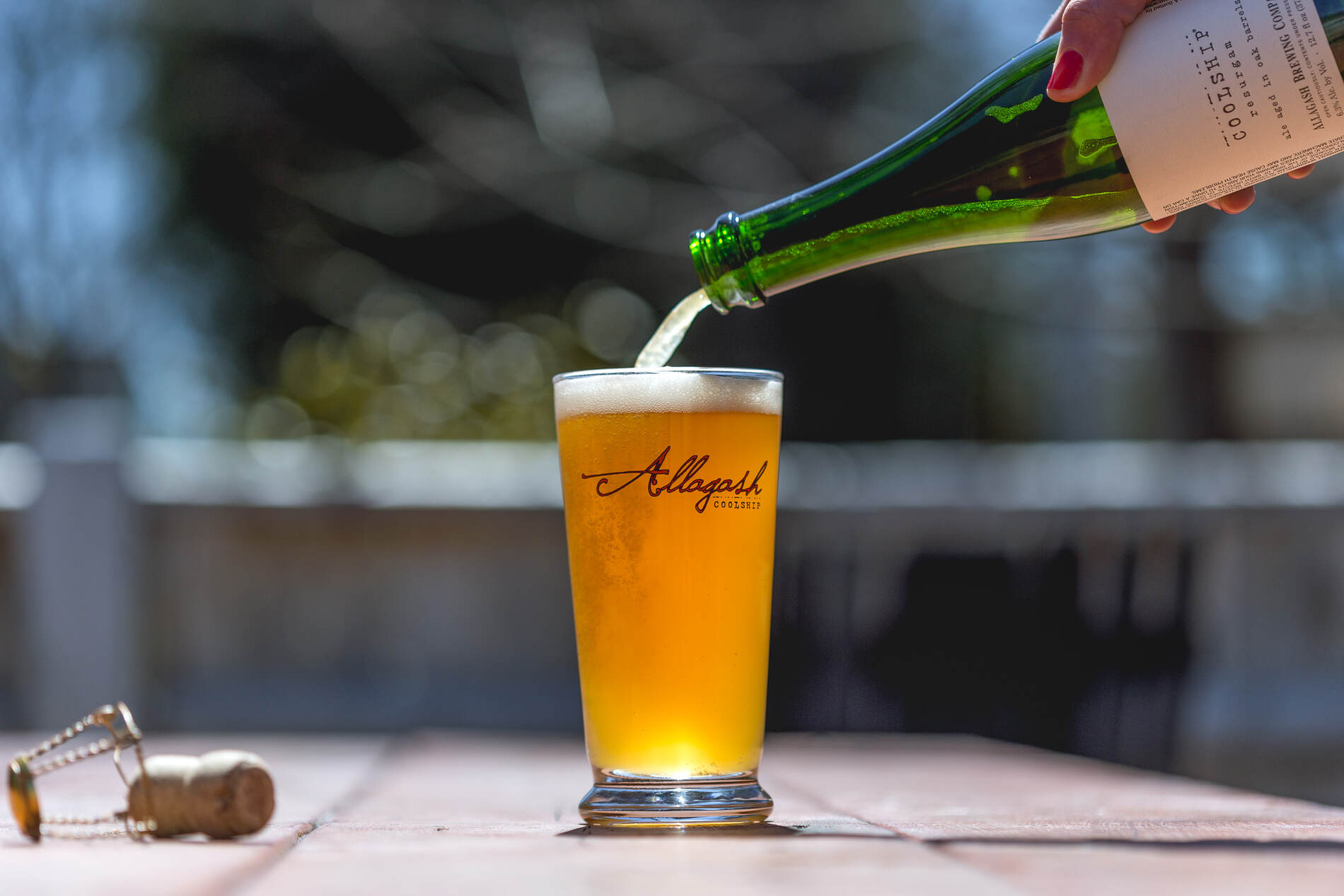When talking about spontaneously fermented beer, it’s better to think of the barrel not as a container, but as an environment. Oxygen ingress—minute amounts of oxygen allowed into the barrel by the natural pores in the wood—has a profound effect on the beer.
The Barrel as an Ingredient
To be clear, oxygen is generally bad for beer. It causes oxidation which can ruin a beer’s flavor. However, for the purposes of spontaneous fermentation, oxygen is essential—in moderation. The oxidative flavors that come from the ingress are allowed the time to mellow out and turn from unpleasant to sought-after notes. This process can’t be forced; the hand of time primarily shapes flavor.

Jason, our brewmaster, tests barrels of Coolship. Not a bad job to have.
The Power of Blending Beer
Once the barrel aging is complete (as judged by the brewers) the blending process begins. It’s worth noting that the creation of spontaneously fermented beer certainly appears to be pretty, well, wild. Indeed fermentation—an aspect of brewing that is basically what makes beer, beer—is taken entirely out of the hands of the brewer. But thanks to tradition (backed by science), we actually have a surprisingly tight grip over the parts of the brewing we can control: ingredients, process, temperature, barrel selection, blending, and sometimes dumping. Ultimately, it’s during blending that we humans command final authority over the wilder aspects of this brew.
There’s no getting around it, different barrels produce different beer. This is due to a combination of the unique mixtures of wild yeast that come to roost on the wort, along with the specific shape and make-up of each barrel. Flavors ranging from tartness to funk to tropical fruit to floral notes all have to be carefully melded to create a beer with balance—that oft-used word of the brewing world. In short: brewing with wild fermentation is about wrangling disparate parts to make one cohesive whole. The complexity of these beers is a large part of their allure, and a hard-won accomplishment (in brewing terms).
When coming to a final blend, the decision is inevitably a sensory one—which is less science than art. As our process goes, our brewmaster selects barrels and creates the initial blends. He then brings in a panel of senior brewers to evaluate the blends. After much sipping and talking, a favorite is crowned.

Coolship Resurgam is a blend of one-, two-, and three-year-old spontaneously fermented beer. It is also pretty.
The Beautiful Result
The resulting beer is golden-hued (unless it’s been aging on fruit), crisp, dry, and features notes of apricot, lemon zest, a hint of funk, and light oakiness that coalesce into a dry finish. In short, the beer is a flavor experience that’s easier to enjoy than describe.
We’re also very humbled to have been invited—four times—to the Night of the Great Thirst, an event which celebrates Lambic beers. We’ll admit that it feels more than a little excellent to serve our Coolship beers alongside the Belgian breweries we’ve looked up to for years.
We hope you now have a fuller picture of what makes brewing with a coolship such a rewarding pursuit. We’ll be brewing our Coolship beers for the next couple of weeks or so, while the air temperature is just right. If you’re ever near the brewery, we encourage you to stop by and ask us all about it; we’d love to show you around.







